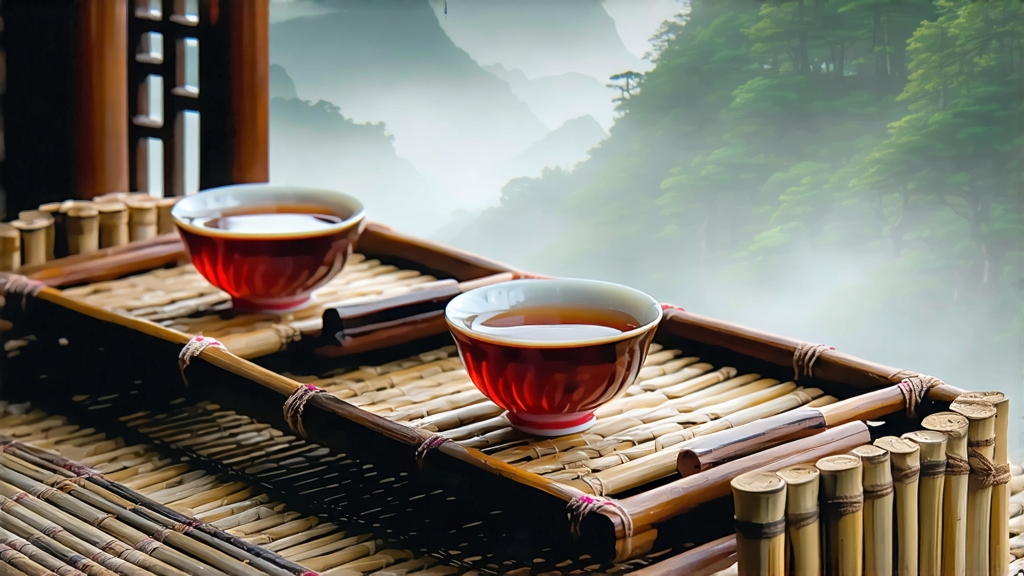
Long before Assam, Ceylon, or Earl Grey entered the English lexicon, the first black tea ever created was quietly born among the granite cliffs and cedar-scented mists of the Wuyi Mountains in China’s Fujian Province. Locals call it Zheng Shan Xiao Zhong—“proper-mountain small variety”—but the world knows it as Lapsang Souchong, the primordial black tea whose ember-kissed leaves rewrote the story of global tea trade. To understand Lapsang is to hold a mirror to four centuries of maritime adventure, imperial taste, and the alchemy of smoke, pine, and time.
History: From Mountain Hermitage to London Drawing Rooms
The accepted chronicle begins around 1568, late-Ming dynasty, when passing soldiers commandeered a Wuyi tea factory. Eager to dry the leaves quickly before marching on, workers spread them over freshly cut pine fires. The accidental smoke infusion produced a dark, fragrant tea that travelled down the Nine-Dragon Gorge to the port of Xingcun, then by river to Quanzhou and onto Dutch sloops bound for Java and Amsterdam. By 1604 the first chests reached London, where the novelty of a fully oxidised “red” tea—hong cha—captivated a nation still accustomed to green. The East India Company soon coined the trading term “bohea” (from the local Wuyi sub-region) and Lapsang Souchong became the signature of early European tea culture, priced higher than silver and stored in locked caddies in parlours from Bath to Edinburgh.
Terroir: Why Only the Wuyi Can Birth Authenticity
Authentic Zheng Shan Xiao Zhong is circumscribed by law: it must be grown within the 60 km² core of the Wuyi Nature Reserve, an UNESCO dual heritage site whose mineral-rich laterite soil, diurnal temperature swings of 15 °C, and 80 % humidity coax the native Xiao Ye Zhong (“small-leaf species”) bush to produce shoots unusually high in geraniol and linalool—volatile compounds that marry with pine smoke to create the tea’s signature lychee-rosy note. Outside this radius, even identical cultivars and copying techniques yield only “wai shan” (outer-mountain) replicas, flatter in cup and coarser in smoke.
Leaf Grades: A Souchong Family Tree
The word “souchong” refers to the fourth and fifth leaves down the stem—larger, more leathery than the prized bud and first leaf used for green or white teas. Within Lapsang there are three recognised grades. Superior (te ji) is harvested for only five days in late April, one tender bud plus two souchong leaves, quickly withered over soft pine embers so that the finished strip is glossy black with golden tips. First grade (yi ji) allows mechanical withering and a slightly longer smoke, giving a rust-brown leaf and sharper campfire edge. Export “Russian caravan” style is often a blend of third-grade souchong and broken leaves, intensely smoked to survive the overland months to Moscow. Finally, the modern “unsmoked” or “craft” lapsang—withered and oxidised in bamboo trays warmed only by charcoal—caters to palates seeking malt and dried-longan sweetness without the tarry cloak.
Craft: The Dance of Fire and Air
Plucking begins at dawn when dew still weighs the leaf, slowing oxidation. The sacks are carried to Qing Lou—three-storey wooden houses whose top floor is latticed with bamboo mats. Below, pinewood is stacked into shallow pits and ignited; once the flames subside, the smouldering resinous embers release a cool, aromatic smoke that drifts upward through the slats. Craftsmen shuffle the leaves every twenty minutes for eight hours, allowing moisture to fall from 75 % to 35 % while the smoke fixes its signature terpenes. Next comes rolling: 55 minutes of machine-assisted pressure that ruptures cell walls, initiating oxidation. The leaf is then piled in copper-lined troughs where, at 26 °C and 85 % humidity, it reddens for three hours. A final 90-second blast of 90 °C pine smoke halts enzyme activity, after which the tea is baked above low charcoal twice—first at 100 °C to drop moisture to 7 %, then again at 80 °